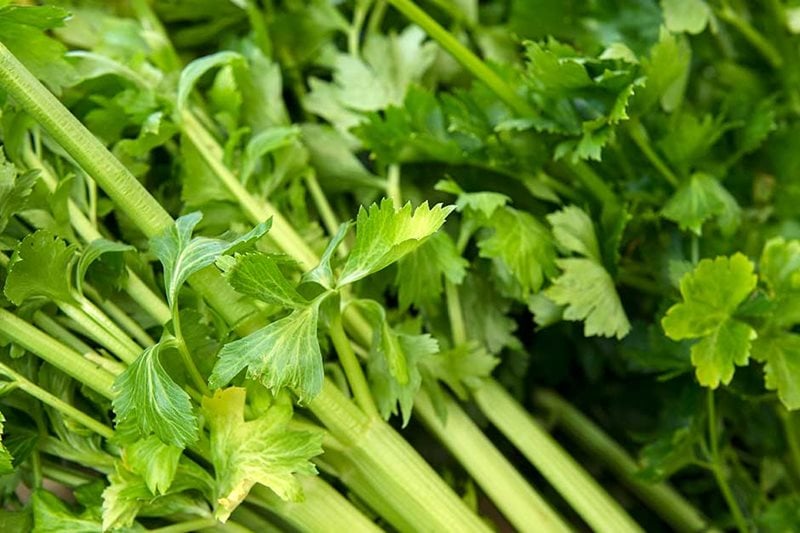
- Botanical name: Apium graveolens
- Origins: Native to the Mediterranean, wild celery was mostly used as a food flavouring and a medicine throughout the ancient world.
- First cultivated: Evidence suggests that celery was first cultivated as a food in 17th century France.
- Types: There are two main types of celery; trench celery (such as ‘Starburst F1’ or the pink-tinged ‘Giant Red’), and self-blanching varieties (such as ‘Loretta’ and ‘Tango F1’).
- RHS advice: How to grow celery
Did you know?
Humans have been consuming celery for over 3,000 years. It was primarily used as a medicine throughout the ancient world, treating a range of ailments from nervousness to indigestion. The ancient Egyptians used celery to treat rheumatism, but also used it to honour their dead. In fact, garlands of it were found in Tutankhamun’s tomb.
The ancient Greeks held celery in such high regard, winners of athletic competitions would be rewarded with wreaths made from the plant. The ancient Romans, on the other hand, considered celery an aphrodisiac, and it is said that the famous Italian lover, Casanova, consumed large quantities of the vegetable to maintain his stamina.
Despite its colourful history, celery has become a seriously overlooked vegetable in recent years, usually relegated to the stockpot or crudité tray. Although that could be changing with the current celebrity-endorsed craze for celery juice which has exploded all over social media in recent months.
Celery certainly has a lot going for it nutritionally. A powerful source of antioxidants, celery can help protect cells, blood vessels and organs from oxidative damage. It is also packed full of phytonutrients which help reduce inflammation, and is an excellent source of vitamin K which helps with blood clotting and bone metabolism. Studies also suggest it can help boost cardiovascular health, lower blood pressure, alleviate joint pain, soothe the nervous system, and with only 10 calories per stick, it can also help with weight loss. Eating the whole vegetable rather than juicing it ensures you receive all of its nutritional benefits, including the fibre.
Sliced into salads, blitzed into silky soups or braised in butter, there are so many ways to enjoy celery. And don’t even think about throwing away the leaves; flavoursome and aromatic, they can be used as a herb or a seasoning, and they make a delicious pesto. Of course, celery also makes the perfect swizzle stick for a Bloody Mary, a tradition which dates back to 1960s Chicago. Legend has it, a guest at the city’s Ambassador East Hotel grew impatient while waiting for the bartender to bring him a swizzle stick for his cocktail, so he grabbed a stick of celery off a nearby garnish tray and history was made.
Celery does have a reputation as a difficult crop to grow, although self-blanching varieties require less maintenance than traditional trench varieties, which have to be earthed up. However, trench celery is thought to have a far superior flavour. All celery needs deep, nutrient-rich soil and a steady supply of water. Slugs and snails love the young stems and the leaves can be susceptible to fungal diseases, so it does require a certain amount of TLC. Supermarket-bought celery might seem the easier option, but it has been found to contain large quantities of pesticides, so it’s definitely worth trying to grow your own.

